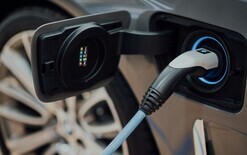MTA on scrappage scheme

A scrappage scheme is one of the proposals that’s been unveiled in the government’s first emissions reduction plan (ERP).
Greig Epps, advocacy and strategy manager at the Motor Trade Association (MTA), shares his thoughts with Autofile Online on the so-called clean car upgrade and how the ERP will have repercussions for the car industry.
Autofile: What is the MTA’s reaction to the clean car upgrade announcement in the ERP?
Greig Epps: “We’re glad the government has picked up the MTA’s proposal to look at scrappage and to have the idea developed by officials is a good start. However, it could have a broader impact than what’s proposed. It should be a scheme for anyone concerned about their vehicle’s age, safety and emissions.
“We need to give the Ministry of Transport [MoT] full credit for reaching out to industry. In this case, it has set aside a budget and officials are speaking to a wide range of stakeholders to establish how a scrappage scheme may best work. This includes automotive groups, but I believe it also includes fleet and finance companies.
“However, the proposal is narrowly focused on electrified vehicles – EVs, plug-in hybrids [PHEVs] and petrol hybrids – under about eight years old. A sizeable subsidy is proposed, which for some vehicles may only cover about half their sticker prices.
“Participants will need to find the rest. This may be difficult for people on low incomes given restrictions on the lending market resulting from the amended Credit Contracts and Consumer Finance Act and its responsible lending rules.
“We also understand the clean car upgrade grant cannot be combined with the clean car discount, so you get one or the other – not both subsidies for low-emissions vehicles [LEVs].
“The MTA’s proposal aimed to support a transition. We suggested a much lower, but still attractive, incentive would be made available to people who commit to moving to a safer, cleaner method of transport.
“If a car, we think it should be at least 25 per cent cleaner in terms of carbon dioxide [CO2] emissions and at least a three-star rated for safety. We need to pilot the scheme and 2,500 vehicles is about right for that.
“We have said the scope should be broader, allowing anyone to participate and with lower incentives. There is concern the range of vehicles to be offered through the clean car upgrade will be in short supply and unaffordable, even with the substantial subsidy.
“There are a lot of uncertainties about the scheme due to its narrow focus and mixed objectives – lower emissions, but equity-focused. More work will be needed by officials to see if the target group will actually benefit.
“We see issues around the availability of off-street parking and home-charging facilities for the MoT’s target demographic, and also if LEVs you can buy under this scheme will meet families’ needs.”
Autofile: How confident is the MTA that the clean car upgrade will become permanent?
Greig Epps: “We would hate to see it fail due to limited scope. I hope the MoT receives enough similar feedback from industry and revise its thinking.
“This would mean it focuses on the fleet and how scrappage can improve it, and that it partners with other more suitable government agencies to see how low-income families can be supported in accessing low – or lower – emissions vehicles.
“I hope the trial is successful so we have a better starting point to widen the scheme. If the trial is unsuccessful, I hope the idea of scrappage to improve our fleet isn’t shelved for 10 years, but lessons are learned and the scheme improved.
“Overseas schemes can be looked in conceptualising how this initiative could work, but we cannot ‘lift and shift’ something into the New Zealand context. Many schemes overseas were introduced as a way of stimulating economic activity. Examples of this are the UK around the GFC in 2009, or to support a local manufacturing, such as the French and German schemes.
“We have a unique fleet composition. A Kiwi scrappage scheme should address the fleet’s age and safety and, almost as a bonus, to also address emissions.”
Autofile: How would the MTA define vehicles that should be the focus of scrappage?
Greig Epps: “Vehicles over aged 15-plus will fail a warrant of fitness more than 50 per cent of the time. Those aged 13-15 are more likely to be involved in fatal crashes.
“A vehicle that has done about 150,000km can have an emissions profile up to 40 per cent worse than when built. Assuming 10,000km of travel per year, that car’s about 15 years old. We think a trigger point would be 15 years.
“But a serious gap in our knowledge is what New Zealand’s CO2 profile? There should be more in-service emissions testing to better understand how bad the fleet is. We could use these results to better identify scrappage candidates.
“The MTA isn’t calling for mandatory scrappage. A scheme must be voluntary because people should be able to choose what they drive. We all have different reasons for driving what we do – from size, shape and colour to technical performance or even what sound the engine makes.
“However, motorists need to have the option to be part of the transition to a cleaner, safer fleet. A scrappage scheme with a modest incentive of, say $2,500, can be that option.
“If people hold onto their vehicles for whatever reason, we would encourage regularly servicing as that can help to keep emissions as close to original the car’s build state as possible.”
Autofile: How is the MTA helping the government to shape the scrappage trial?
Greig Epps: “Michael Wood, the Minister of Transport, noticed the MTA’s proposal in our submission on the Climate Change Commission’s report. After discussion with us, he asked officials to look into this.
“We’ve been explaining our ideas to officials. Late last year, we hosted a forum to discuss how the industry could help with such a scheme. We’ve encouraged officials to spread their net widely to gather views.
“We connected them with the Financial Services Federation to better understand potential obstacles facing low-income families seeking loans to make up balances of purchase prices.
“We’ve also encouraged them to speak to the other associations and major players, such as fleet companies. Something this broad-reaching cannot be based on one organisation’s viewpoint. It needs a connected view from industry as a whole.”
Autofile: What does the MTA think about other aspects of the ERP?
Greig Epps: “The MTA’s submission to the Climate Change Commission stated EVs are only part of the solution. We’re all about the journeys people make and ensuring they have options.
“As we transition to a low-emissions future, this means electrified vehicles, hydrogen-shared services, public transport, active travel modes and low-emissions models with internal combustion engines [ICEs].
“One thing many people miss in ambitious predictions is that a fleet with 30-40 per cent electrified vehicles in 2035 is a fleet that has up to 70 per cent ICEs.
“We need to spend the next 10 years or so helping people transition to a low-emissions journey that suits them. It seems low-emissions ICEs will be a key part of that.
“That means we’ll still need technicians who can service and repair the millions of ICEs that will be with us in 2035. We will also need dealers to help consumers make journey choices and we will need service stations to energise those whether through biofuels, hydrogen or electrons.
“The ERP has solidified the path forward that the industry has been talking about for the past couple of years. The fleet composition will slowly change, starting now with the clean car discount and from next year with the clean car standard.
“There will be economic pain felt by everyone because prices will rise as the limited supply of LEVs is tapped by every country trying to implement policies for a zero-carbon future.
“Biofuel blends will be slowly introduced, which may increase fuel costs. Supply chains will take at least another year or so to recover, but will freight costs drop to pre-pandemic levels? That’s unlikely.
“It’s likely the domestic second-hand market will be more active as people hold onto their vehicles or replace from within the existing fleet. This will put more pressure on the repair sector to maintain them to ensure safety and to keep cars performing as best they can.”
Autofile – first with news that matters
Despite some media reporting on “rumours” it would be included in the ERP, the government’s thinking on a scrappage scheme was first reported by Autofile Online in 2019. Click here for that story.
It was also reported in-depth more recently – in October 2021 – when the discussion document for the ERP went out for consultation. For that story, click here.
What the government did with its ERP on May 16 was confirm what it calls the “clean car upgrade” will likely draw on California’s Clean Cars 4 All initiative.
While it was “predicted” by other media that New Zealand’s system would be partially based on California’s, Autofile reported on this in its November 2021 issue.
Michael Wood, Minister of Transport, was quoted as saying, “to make quality cleaner vehicles more accessible, we will introduce a scrappage scheme for low-income New Zealanders similar to California’s Clean Cars 4 All initiative”. You can access that article here.





